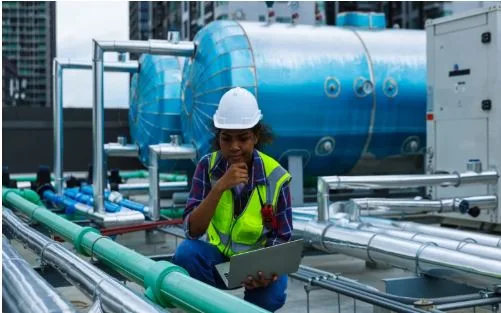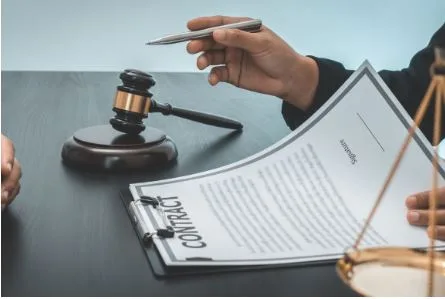Chlorine Gas (Cl₂) Safety Protocols: What Water Treatment and Chemical Plants Can’t Afford to Ignore
Chlorine gas (Cl₂) is a cornerstone chemical used extensively in water treatment and various industrial processes. While indispensable for disinfection and chemical manufacturing, it is also extremely hazardous if mishandled. For professionals working in water treatment facilities, chemical plants, or any operation involving Cl₂, understanding and implementing robust safety protocols is not just regulatory—it’s lifesaving.
This article explores essential chlorine gas safety protocols, highlighting why water treatment and chemical processing industries must remain vigilant in their handling and response strategies.
Understanding Chlorine Gas (Cl₂) and Its Hazards
Chlorine gas is a greenish-yellow, non-flammable gas with a pungent odor that is detectable at concentrations as low as 0.3 ppm. It is heavier than air, enabling it to settle in low-lying areas and increasing the potential for exposure in confined or inadequately ventilated spaces.
Despite its usefulness—primarily for disinfecting drinking water and wastewater, and manufacturing PVC, solvents, and pesticides—Cl₂ is classified as a toxic inhalation hazard. Exposure to even small amounts can cause irritation to the eyes, throat, and lungs, while higher concentrations can result in severe respiratory damage or death.
Acute exposure risks:
- Eye and skin burns
- Respiratory distress and pulmonary edema
- Long-term lung damage
- Fatalities at concentrations > 430 ppm
Chronic exposure risks:
- Reactive airway dysfunction
- Increased sensitivity to allergens
- Long-term respiratory complications
Key Regulatory Guidelines and Standards
To prevent accidental releases and exposures, agencies around the world have established strict chlorine gas safety standards. Some of the most relevant regulatory frameworks include:
- OSHA (Occupational Safety and Health Administration): Permissible Exposure Limit (PEL) of 1 ppm over 8 hours
- NIOSH (National Institute for Occupational Safety and Health): Immediately Dangerous to Life or Health (IDLH) concentration is 10 ppm
- EPA (Environmental Protection Agency): Requires Risk Management Plans (RMP) under the Clean Air Act
- DOT (Department of Transportation): Governs Cl₂ transport safety and labeling
- Chlorine Institute (CI): Publishes comprehensive best practices for Cl₂ storage and handling
Adhering to these regulations is crucial, but proactive safety culture goes beyond compliance.
Critical Safety Protocols for Cl₂ Handling
- Engineering Controls and Facility Design
Implementing passive safety features is the first line of defense against Cl₂ leaks and exposure. These include:
- Ventilation Systems: Local exhaust ventilation in rooms where Cl₂ is stored or used
- Gas Detectors and Alarms: Installed at low points, since Cl₂ is denser than air; alarms must be audible and visible
- Scrubber Systems: To neutralize any released gas
- Secondary Containment: Dikes or berms to contain leaks from cylinders or tanks
- Automated Shutoff Valves: Reduces human intervention in emergencies
- Personal Protective Equipment (PPE)
Proper PPE is non-negotiable. Essential gear includes:
- Full-face respirators or SCBA (Self-Contained Breathing Apparatus)
- Chemical-resistant gloves and suits
- Eye protection with side shields or goggles
- Safety boots and face shields during maintenance tasks
Routine inspections and PPE training ensure their effectiveness during an actual emergency.
- Routine Inspection and Maintenance
Cl₂ equipment—including cylinders, tanks, valves, and piping—must be subject to strict inspection protocols:
- Leak Detection: Using ammonia-soaked rags or electronic gas detectors
- Valve Testing: Especially Chlorine Institute-approved valves
- Chlorine Scales: To detect unexpected weight changes signaling leaks
- Preventive Maintenance Logs: A digital CMMS (Computerized Maintenance Management System) helps track inspections and alert on overdue tasks
Emergency Response Planning and Training
Even with preventive measures, accidents can happen. Having a detailed, practiced emergency response plan is critical.
Key Elements of an Emergency Plan:
- Evacuation Routes and Muster Points: Clearly marked and regularly drilled
- Emergency Shutdown Procedures: Personnel must be trained to isolate gas releases quickly
- Communication Protocols: Radio communication and automated alert systems
- Decontamination Stations: Eyewash and safety showers in strategic locations
- Coordination with Local Authorities: Fire departments and HAZMAT teams must have your site’s chlorine layout and contact info
Drills should be conducted quarterly at minimum, with a combination of tabletop and live-action simulations.
Training and Competency Programs
Safety culture depends on people more than policies. Regular training for new hires and refreshers for veterans is essential. A well-rounded chlorine safety training program should cover:
- Properties and dangers of Cl₂
- Proper PPE use and limitations
- Cylinder handling and storage techniques
- Emergency spill and leak containment
- First aid and medical response
Use of virtual reality (VR) or augmented reality (AR) is gaining traction in the industry to simulate Cl₂ leak scenarios without real-world risks.
Storage and Transportation Best Practices
Cl₂ cylinders and tankers must be stored and transported with exceptional care:
- Cylinder Storage:
- Upright position with valve protection caps
- Secured to prevent tipping
- Away from heat sources and combustible materials
- Separate from incompatible chemicals (e.g., ammonia)
- Transport Protocols:
- DOT-compliant placarding and labeling
- Emergency response information onboard
- Trained drivers with HAZMAT endorsements
- Securement using approved bracing systems
Never use hoists or magnets to lift cylinders; only use approved cradles or carts.
Digital Tools for Enhanced Chlorine Safety
Modern plants are integrating digital tools to enhance Cl₂ safety:
- SCADA Systems: Real-time monitoring of Cl₂ concentrations and automated controls
- Mobile Apps: For inspection checklists, MSDS access, and emergency contacts
- IoT Sensors: Monitor pressure, temperature, and leaks in Cl₂ systems
- Training Portals: Online learning management systems (LMS) to track certifications
Adopting technology can bridge the gap between written protocols and operational safety.
Incident Case Studies: Lessons from the Past
Learning from real-world accidents is a powerful motivator for change:
- Graniteville, South Carolina (2005): A train derailment led to the release of over 60 tons of Cl₂, killing nine and injuring hundreds. The incident underscored the importance of transport safety and community notification systems.
- Los Angeles, California (2019): A faulty valve on a Cl₂ cylinder at a water treatment facility led to a minor release. Luckily, no one was harmed, but it prompted a full revision of inspection and leak detection protocols.
These examples reinforce that even a small oversight can have catastrophic consequences when dealing with Cl₂.
Safety Is a Continuous Process
Cl₂ is as essential as it is dangerous. For water treatment and chemical facilities, the responsibility to safeguard workers, the public, and the environment is ongoing. Adhering to chlorine gas safety protocols isn’t a one-time initiative—it’s a culture that must be cultivated, enforced, and evolved.
Don’t wait for a leak to test your system. Invest in training, equipment, and process audits today. Because with Cl₂, there are no second chances.







